WHY SHOULD ART BE TAUGHT AT SCHOOLS?
NATIONAL PARKS
DISTANCE LEARNING
ADVANTAGES
1) CONVENIENCE
It is convenient for someone to study at the comfort of his own home.
He or she is given the opportunity to carry on studying without having to commute as well as regardless of weather conditions.
2) FLEXIBLE
The student can choose the number of courses and the times during which he has the ability to study(AT HIS OWN PACE).
3) AFFORDABLE
Distance learning may be a feasible solution for those students who do not wish to move to another city or country.
DISADVANTAGES
1) Students who wish to attend courses through distance learning must indeed show more self-discipline since the learning environment created by classroom and other students does not exist.
2) Furthermore, the direct contact with the professors , meaning for a number of students, valuable
quidance, does not exist .
3) The options given to students regarding the courses are less when they decide to follow a distance learning education.
4) Some students also consider signifigant being among other students and share university spirit with their peers.
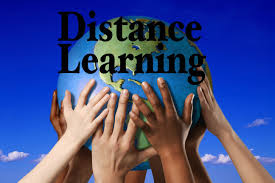
CLONING

ADVANTAGES
1. It could be a life saving mechanism. Human could be cloned so as to be used in transplants.
2. It could be used genetically so as to avoid genetically transferred diseases such as diabetes.
3. It could be used for the cloning of plants and animals which ,in turn, could be used for experimentation purposes by scientists.
DISADVANTAGES
1 A number of undesirable traits could possibly occur in the cloned objects .
2 Clones may be used in a plethora of destructive ways with catastrophic consequencies.
3 It is considered to be morallyunacceptable.
4 It could result in creating DNA diversity among humans.

http://ed.ted.com/on/1ECgrLFU
PROS AND CONS
SUCCESS: IS IT DUE TO HARD WORK OR A MATTER OF CHANCE?
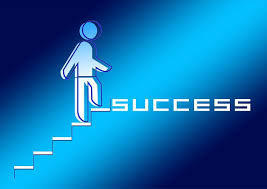
Success is achieving one' goals .
Fullfilling one's ambition , means definitely working hard.
On the one hand, there are those people who are characterised by their dedication to what they do, determination, integrity and positive thinking attitude. They , therefore, manage to perform
outstandingly and it is evident that they generate pioneering and productive work.
Steve Jobs would be a good example of this when he developed iPhones despite the popularity of other non-touch screen phones at the time. Thus, when touch screen phones were finally in boom, he was well-prepared and made good use of the opportunity.
Although hard work is indeed crucial, one may argue that this intself is not enough.
Luck plays a role of extreme importance as well.
It is highly unlikely for somoene to succeed without working hard but at the same time one needs luck in order to be at the right place the right time. Even people who do not believe in luck may be affected by it. Take ,for example, Lional Messi the famous footballer. Born in Argentina, he was diagnosed with a grown hormone deficiency. Coming from a poor family, he made it into Barcelona's youth academy not only because of his excellent performance but also due to his luck.
Is success a result of constant hard work or pure luck?
LET US HAVE A LOOK AT SOME FAMOUS SAYINGS ON THE SUBJECT
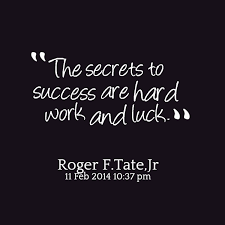
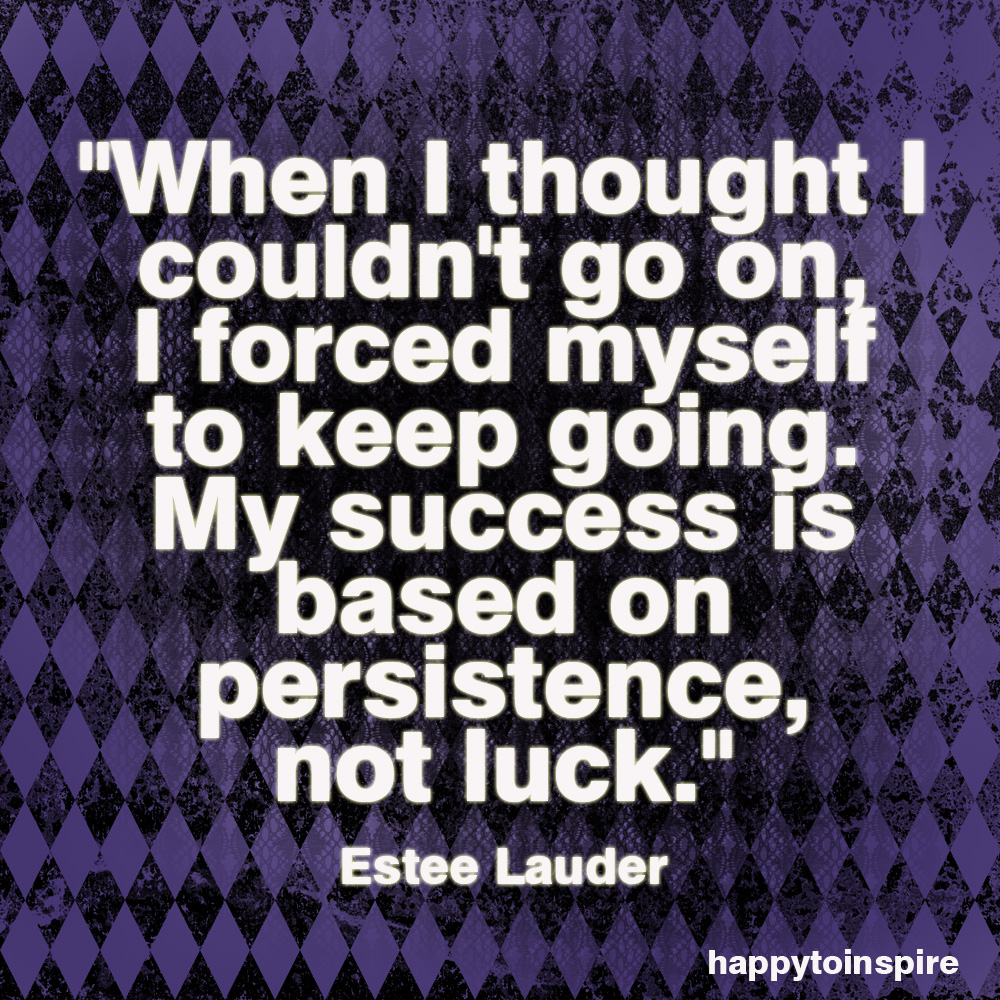

BULLYING
(From Wikipaedia)
Most people know that bullying is wrong. Calling someone names has absolutely no beneficial purpose. Moreover, hitting someone makes a bully feel good in the moment while doing permanent damage to the person being victimized. With the Internet, people now have even more opportunities to bully through cyberbullying.
One of the effects of bullying is that it can change the victim’s personality. It can cause people who are normally confident and happy to become self-conscious, shy, and unsure. Additionally, victims of bullying may also become sad or depressed.
As a result of bullying, people can lose their ability to love and trust, denying them the chance to experience a quality relationship later in their life.
Another unfortunate consequence of this is that bullying is often cyclical. People who have been bullied can, in an attempt to gain their power and self-esteem back, become bullies themselves.
CYBERBULLYING
Cyberbullying is an action of harming or harassing via information technology networks in a repeated and deliberate manner.( FROM WIKIPAEDIA)
A child who is a victim of bullying MUST feel free to talk about the problem he /she faces with his /her parents or teachers.
ORGANIC FOOD
Organic foods are foods produced by organic farming. While the standards differ worldwide, organic farming in general features cultural, biological, and mechanical practices that foster cycling of resources, promote ecological balance, and conserve biodiversity. Syntheticpesticides and chemical fertilizers are not allowed, although certain approved pesticides may be used. In general, organic foods are also not processed usingirradiation, industrial solvents, or synthetic food additives.( From wikipaedia)
Organic food has become very popular. But navigating the maze of organic food labels, benefits, and claims can be confusing. Is organic food really healthier? Do GMOs and pesticides cause cancer and other diseases? What do all the labels mean? This guide can help you make better choices about which organic foods are healthier for you and better for the environment, and how you can afford to incorporate more organic food into your diet.
ALTERNATIVE SOURCES OF ENERGY
Some of the information used here is from Wikiwand
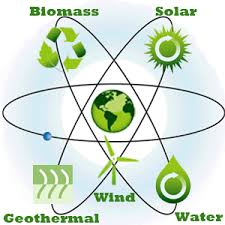
NUCLEAR POWER
WE CHOSE A PROJECT ABOUT NUCLEAR POWER WROTE BY TWO OF OUR PRO STUDENTS
EMOTIONAL INTELLIGENCE
"All learning has an emotional base."
Plato
-Because emotional intelligence is often used in the workplace and in business settings, people could use this to lure a target audience to purchase an item or buy a service based on an emotional appeal. It could also be used to make a person feel inferior or to elicit certain information.
Read more : http://www.ehow.com/info_8640201_disadvantages-emotional-intelligence.html
E BOOKS VS PAPER BOOKS.
With the advance of phones, tablets, and ereaders, ebooks have become a popular reading standard. Still, there's something about the feel of an old-fashioned paper book. We asked you which one is better and why, and here are some of the best arguments we heard.
Which is Better: Ebooks or Paper Books?
In short
In brief
In summary
To summarise
In a nutshell
To conclude
In conclusion
The former, … the latter
Firstly, secondly, finally
The first point is
Lastly
The following
Due to / due to the fact that
Owing to / owing to the fact that
Because
Because of
Since
As
Therefore
So
Consequently
This means that
As a result
But
However
Although / even though
Despite / despite the fact that
In spite of / in spite of the fact thaT
Nevertheless
Nonetheless
While
Whereas
Unlike
In theory… in practice…
VIRTUAL REALITY
POSITIVES
The use of virtual reality as a training tool is well known, in particular in the field of surgery. Medical schools have adopted this technology as a way of teaching the next generation of surgeons, for example robotic surgery.


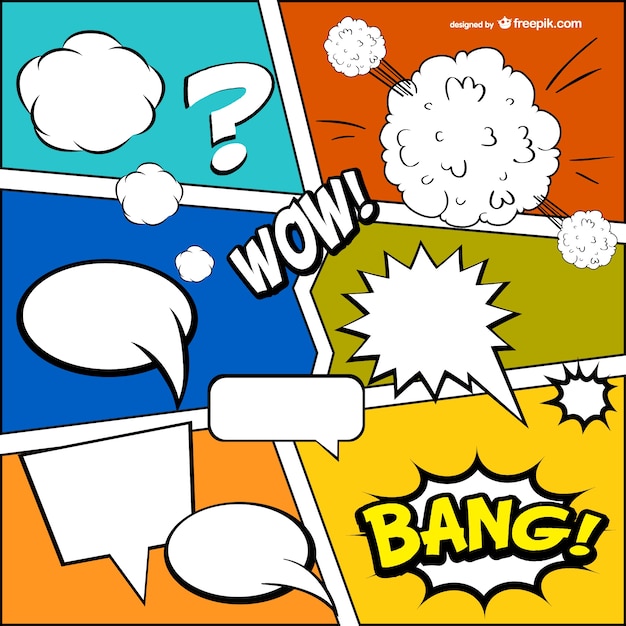
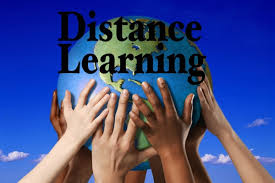
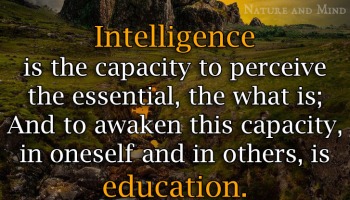
FROM WIKIWAND
The Oxford English Dictionary defines wisdom as "Capacity of judging rightly in matters relating to life and conduct; soundness of judgement in the choice of means and ends; sometimes, less strictly, sound sense, esp. in practical affairs: opp. to folly;" also "Knowledge (esp. of a high or abstruse kind); enlightenment, learning, erudition."] Charles Haddon Spurgeon defined wisdom as "the right use of knowledge".Robert I. Sutton and Andrew Hargadon defined the "attitude of wisdom" as "acting with knowledge while doubting what one knows".


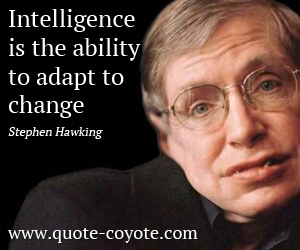


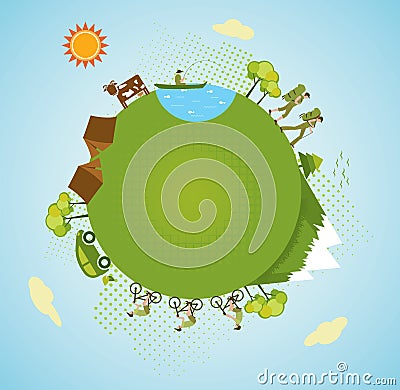


On the other hand elderly care is definitely a full time job which is difficult to be carried out due to the fact that most adults today have an extremely busy schedule.
NURSING HOMES
POSITIVES
-Old people have the feeling of living in a community since they spend their time doing activities such as going on excursions or just walking with people of thei age.
-Nursing homes are not what they used to be. They may offer elderly the medical care that is needed, and makes them possibly feel more secure.
NEGATIVES
-Simply put, nursing homes are very expensive, and might actually be beyond the realm of possibility for many families.
-Without their families, old people feel lonely.
-Lack of freedom: People who have lived a lifetime and made it to their golden years in one piece deserve their freedom.
WATCH THE FOLLOWING VIDEO
IT IS WORTH A MILLION WORDS
NATIONAL PARKS
DISTANCE LEARNING
ADVANTAGES
1) CONVENIENCE
It is convenient for someone to study at the comfort of his own home.
He or she is given the opportunity to carry on studying without having to commute as well as regardless of weather conditions.
2) FLEXIBLE
The student can choose the number of courses and the times during which he has the ability to study(AT HIS OWN PACE).
3) AFFORDABLE
Distance learning may be a feasible solution for those students who do not wish to move to another city or country.
DISADVANTAGES
1) Students who wish to attend courses through distance learning must indeed show more self-discipline since the learning environment created by classroom and other students does not exist.
2) Furthermore, the direct contact with the professors , meaning for a number of students, valuable
quidance, does not exist .
3) The options given to students regarding the courses are less when they decide to follow a distance learning education.
4) Some students also consider signifigant being among other students and share university spirit with their peers.
MISCONCEPTIONS ABOUT DISTANCE LEARNING
CLONING
ADVANTAGES
1. It could be a life saving mechanism. Human could be cloned so as to be used in transplants.
2. It could be used genetically so as to avoid genetically transferred diseases such as diabetes.
3. It could be used for the cloning of plants and animals which ,in turn, could be used for experimentation purposes by scientists.
DISADVANTAGES
1 A number of undesirable traits could possibly occur in the cloned objects .
2 Clones may be used in a plethora of destructive ways with catastrophic consequencies.
3 It is considered to be morallyunacceptable.
4 It could result in creating DNA diversity among humans.
http://ed.ted.com/on/1ECgrLFU
PROS AND CONS
SUCCESS: IS IT DUE TO HARD WORK OR A MATTER OF CHANCE?
Success is achieving one' goals .
Fullfilling one's ambition , means definitely working hard.
On the one hand, there are those people who are characterised by their dedication to what they do, determination, integrity and positive thinking attitude. They , therefore, manage to perform
outstandingly and it is evident that they generate pioneering and productive work.
Steve Jobs would be a good example of this when he developed iPhones despite the popularity of other non-touch screen phones at the time. Thus, when touch screen phones were finally in boom, he was well-prepared and made good use of the opportunity.
Although hard work is indeed crucial, one may argue that this intself is not enough.
Luck plays a role of extreme importance as well.
It is highly unlikely for somoene to succeed without working hard but at the same time one needs luck in order to be at the right place the right time. Even people who do not believe in luck may be affected by it. Take ,for example, Lional Messi the famous footballer. Born in Argentina, he was diagnosed with a grown hormone deficiency. Coming from a poor family, he made it into Barcelona's youth academy not only because of his excellent performance but also due to his luck.
Is success a result of constant hard work or pure luck?
LET US HAVE A LOOK AT SOME FAMOUS SAYINGS ON THE SUBJECT


BULLYING
(From Wikipaedia)
Bullying may be defined as the activity of repeated, aggressive behavior intended to hurt another individual, physically, mentally or emotionally. Bullying is characterized by an individual behaving in a certain way to gain power over another person. It can be classified into four types:[11]
- Physical (hitting, punching, or kicking)
- Verbal (name-calling or taunting)
- Relational (destroying peer acceptance and friendships)
- Cyber-bullying (using electronic means to harm others)
Physical, verbal, and relational bullying are most prevalent in primary school and could also begin much earlier. Cyber-bullying is more common in secondary school than in primary school.
Most people know that bullying is wrong. Calling someone names has absolutely no beneficial purpose. Moreover, hitting someone makes a bully feel good in the moment while doing permanent damage to the person being victimized. With the Internet, people now have even more opportunities to bully through cyberbullying.
One of the effects of bullying is that it can change the victim’s personality. It can cause people who are normally confident and happy to become self-conscious, shy, and unsure. Additionally, victims of bullying may also become sad or depressed.
As a result of bullying, people can lose their ability to love and trust, denying them the chance to experience a quality relationship later in their life.
Another unfortunate consequence of this is that bullying is often cyclical. People who have been bullied can, in an attempt to gain their power and self-esteem back, become bullies themselves.
CYBERBULLYING
Cyberbullying is an action of harming or harassing via information technology networks in a repeated and deliberate manner.( FROM WIKIPAEDIA)
Cyberbullying has been defined as "when the Internet, cell phones or other devices are used to send or post text or images intended to hurt or embarrass another person"

A child who is a victim of bullying MUST feel free to talk about the problem he /she faces with his /her parents or teachers.
ORGANIC FOOD
Organic food has become very popular. But navigating the maze of organic food labels, benefits, and claims can be confusing. Is organic food really healthier? Do GMOs and pesticides cause cancer and other diseases? What do all the labels mean? This guide can help you make better choices about which organic foods are healthier for you and better for the environment, and how you can afford to incorporate more organic food into your diet.
The benefits of organic food
Organic foods provide a variety of benefits. Some studies show that organic foods have more beneficial nutrients, such as antioxidants, than their conventionally grown counterparts. In addition, people with allergies to foods, chemicals, or preservatives often find their symptoms lessen or go away when they eat only organic foods. In addition:
- Organic produce contains fewer pesticides. Pesticides are chemicals such as fungicides, herbicides, and insecticides. These chemicals are widely used in conventional agriculture and residues remain on (and in) the food we eat.
- Organic food is often fresher. Fresh food tastes better. Organic food is usually fresher because it doesn’t contain preservatives that make it last longer. Organic produce is often (but not always, so watch where it is from) produced on smaller farms near where it is sold.
- Organic farming is better for the environment. Organic farming practices reduce pollution (air, water, soil), conserve water, reduce soil erosion, increase soil fertility, and use less energy. Farming without pesticides is also better for nearby birds and small animals as well as people who live close to or work on farms.
- Organically raised animals are NOT given antibiotics, growth hormones, or fed animal byproducts. The use of antibiotics in conventional meat production helps create antibiotic-resistant strains of bacteria. This means that when someone gets sick from these strains they will be less responsive to antibiotic treatment. Not feeding animal byproducts to other animals reduces the risk of mad cow disease (BSE). In addition, the animals are given more space to move around and access to the outdoors, both of which help to keep the animals healthy.
- Organic food is GMO-free. Genetically Modified Organisms (GMOs) or genetically engineered (GE) foods are plants or animals whose DNA has been altered in ways that cannot occur in nature or in traditional crossbreeding, most commonly in order to be resistant to pesticides or produce an insecticide. In most countries, organic crops contain no GMOs and organic meat comes from animals raised on organic, GMO-free feed.
ALTERNATIVE SOURCES OF ENERGY
Some of the information used here is from Wikiwand
| Oxford Dictionary | Energy fueled into ways that do not use up natural resources or harm the environment. |
The nature of what constitutes an alternative energy source has changed considerably over time, as have controversies regarding energy use. Today, because of the variety of energy choices and differing goals of their advocates, defining some energy types as "alternative" is highly controversial.
In a general sense, alternative energy as it is currently conceived, is that which is produced or recovered without the undesirable consequences inherent in fossil fuel use, particularly high carbon dioxide emissions (greenhouse gas), an important factor in global warming.
With growing concerns over the growing pollution, there has been an exhaustive search made for means of alternative energy. This has included tapping most of the renewable resources of the Earth and using growing technological awareness to create less pollution. As of now, there are eight different types of such energy that we know of and use.
THESE ARE:
SOLAR POWER
WIND POWER
HYDROELECTRICITY
BIOFUELS
GEOTHERMAL ENERGY
HYDROGEN ENERGY
OCEAN ENERGY
BIOMASS ENERGY
In our days scientists have already considering TIDAL ENERGY, WAVE ENERGY and NUCLEAR POWER.
SOLAR ENERGY
It is ultimately the alternate kind of energy since its source,the Sun, is an indefinite source of power. Solar energy is the best way to heat materials and it has also been proven a way to move things.
Solar power is the conversion of sunlight into electricity, either directly using photovoltaics (PV), or indirectly using concentrated solar power (CSP). Concentrated solar power systems use lensesor mirrors and tracking systems to focus a large area of sunlight into a small beam. Photovoltaics convert light into an electric current using the photovoltaic effect.
The International Energy Agency projected in 2014 that under its "high renewables" scenario, by 2050, solar photovoltaics and concentrated solar power would contribute about 16 and 11 percent, respectively, of the worldwide electricity consumption, and solar would be the world's largest source of electricity. Most solar installations would be in China and India.
WIND POWER
POSITIVES
- Wind energy is a green energy source and does not cause pollution.
- The potential of wind power is enormous – 20 times more than what the entire human population needs.
- Wind power is renewable and there is no way we can run out of it (since wind energy originates from the sun).
- Wind turbines are incredible space-efficient.
- The operational costs associated with wind power are low.
NEGATIVES
- The manufacturing and installation of wind turbines requires heavy upfront investments – both in commercial and residential applications.
- Wind turbines can be a threat to wildlife (e.g. birds, bats).
- Noise is regularly reported as a problem by neighboring homes.
MORE INFO ABOUT WIND POWER READ THE ARTICLE IN THE NATIONAL GEOGRAPHIC http://environment.nationalgeographic.com/environment/global-warming/wind-power-profile/
LET'S WATCH A VIDEO ABOUT WIND POWER IN DENMARK WHERE THE USE OF WIND POWER HAS ENTIRELY BECOME ENERGETICALLY INDEPENDENT
WHAT'S INSIDE A WIND TURBINE
NUCLEAR POWER
WE CHOSE A PROJECT ABOUT NUCLEAR POWER WROTE BY TWO OF OUR PRO STUDENTS
EMOTIONAL INTELLIGENCE
"All learning has an emotional base."
Plato
The ability to express and control our emotions is essential, but so is our ability to understand, interpret, and respond to the emotions of others. Imagine a world where you could not understand when a friend was feeling sad or when a co-worker was angry. Psychologists refer to this ability as emotional intelligence, and some experts even suggest that it can be more important than IQ.
Emotional intelligence (EI) refers to the ability to perceive, control and evaluate emotions. Some researchers suggest that emotional intelligence can be learned and strengthened, while others claim it is an inborn characteristic.

WATCH THE VIDEO AND SEE HOW EMOTIONAL BEHAVIOR WORKS
Emotional intelligence (EI) is a term used to describe the ability of an individual to recognize their own and other people's emotions, to discriminate between different feelings and label them appropriately, and to use emotional information to guide thinking and behavior. The term gained prominence in the 1995 book by that title, written by the author, psychologist, and science journalist Daniel Goleman. There are several models of EI. Goleman's own model may now be considered a mixed model that combines what have subsequently been modelled separately as ability EI and trait EI. Goleman defined EI as the array of skills and characteristics that drive leadership performance.
Emotional intelligence (EI) refers to the ability to perceive, control and evaluate emotions. Some researchers suggest that emotional intelligence can be learned and strengthened, while others claim it is an inborn characteristic.

WATCH THE VIDEO AND SEE HOW EMOTIONAL BEHAVIOR WORKS
Currently, there are three main models of EI:
- Ability model
- Mixed model (usually subsumed under trait EI)
- Trait model
The term EI encompasses five abilities
1. Self-awareness- knowing your emotions, recognizing feelings as they occur, and discriminating between them.
2. Mood management- handling feelings so they're relevant to the current situation and you react appropriately
3. Self-motivation- "gathering up" your feelings and directing yourself toward a goal, despite self-doubt, inertia, and impulsiveness
4. Empathy- recognizing feelings in others and tuning into their verbal and nonverbal cues
5. Managing relationships- handling interpersonal interaction, conflict resolution, and negotiations
POSITIVES
Proponents of emotional intelligence argue that it may help people achieve desirable outcomes.
Moreover, people with a high level of emotional intelligence ,as research has shown, develop more positive relations with friends, family members as well as colleagues.
According to its advocates EI may be ideed a crucial factor at developing skills necessary for better job performance.It is crucial in our days that we collaborate in our working environments so as to reach the best possible outcome.
From a psychological perspective, people reaching high EI levels tend to have lower levels of depression and anxiety. Furthermore, as we all know, the feelings of pleasure and happiness are also related to our physical well being.
NEGATIVES
-It's difficult to test for emotional intelligence. One of the main concerns with testing methods is the debate on whether emotional intelligence is based on a person’s temperament and personality, or whether it is a learned response developed through interpersonal skills and experiences.
-Because emotional intelligence is often used in the workplace and in business settings, people could use this to lure a target audience to purchase an item or buy a service based on an emotional appeal. It could also be used to make a person feel inferior or to elicit certain information.
With the advance of phones, tablets, and ereaders, ebooks have become a popular reading standard. Still, there's something about the feel of an old-fashioned paper book. We asked you which one is better and why, and here are some of the best arguments we heard.
Which is Better: Ebooks or Paper Books?
There are many factors to consider when discussing the matter of ebooks vs. printed books, but ultimately, it boils down to the reader’s preference. Avid fans of printed books claim that there’s still nothing like the smell of paper and the rustle of the pages as the reader flips gently through the book with their fingers. There’s something intimately rustic about the entire experience, they claim, and it’s one that cannot be derived from the cold, electronic ebook version.
On the other hand, those who prefer the ebook often say that the device takes a whole lot of weight from their shoulders – literally. Packing for trips is bad enough as it is, but it becomes doubly so when confronted with the task of choosing which book to bring. With the ebook, however, a reader can take hundreds of books with them on the journey, and only take up a few square inches in their car. There’s also the matter of production cost. Obviously, printed books cost more because of the resources needed., and they are not as eco-friendly as e-books.
CAN YOU THINK OF MORE PROS AND CONS OF EITHER E BOOKS OR PRINTED BOOKS?
HISTORY OF E BOOKS
TAKEN FROM WIKIWAND
The Readies (1930)
The idea of the e-reader came to Bob Brown after watching his first "talkie" (movie with sound). In 1930, he wrote a book on this idea and titled it The Readies, playing off the idea of the "talkie". In his book, Brown says movies have outmaneuvered the book by creating the "talkies" and, as a result, reading should find a new medium: "A machine that will allow us to keep up with the vast volume of print available today and be optically pleasing".
Though Brown may have come up with the idea intellectually in the 1930s, early commercial e-readers did not follow his model. Nevertheless, Brown in many ways predicted what e-readers would become and what they would mean to the medium of reading. In an article Jennifer Schuessler writes, "The machine, Brown argued, would allow readers to adjust the type size, avoid paper cuts and save trees, all while hastening the day when words could be ‘recorded directly on the palpitating ether.’" He felt the e-reader should bring a completely new life to the medium of reading. Schuessler relates it to a DJ spinning bits of old songs to create a beat or an entirely new song as opposed to just a remix of a familiar song.
Candidates for the first e-book inventor
The inventor of the first e-book is not widely agreed upon. Some notable candidates include the following:
Roberto Busa (late 1940s)
The first e-book may be the Index Thomisticus, a heavily annotated electronic index to the works of Thomas Aquinas, prepared by Roberto Busa beginning in 1949 and completed in the 1970s. Although originally stored on a single computer, a distributable CD-ROM version appeared in 1989. However, this work is sometimes omitted; perhaps because the digitized text was a means to studying written texts and developing linguistic concordances, rather than as a published edition in its own right.In 2005, the Index was published online.
Ángela Ruiz Robles (1949)
In 1949, Ángela Ruiz Robles, a teacher from Galicia, Spain, patented the first electronic book, la Enciclopedia Mecánica, or the Mechanical Encyclopedia. It was powered by compressed air. Her intention was to decrease the number of books that her pupils carried to the school.
Doug Engelbart and Andries van Dam (1960s)
Alternatively, some historians consider electronic books to have started in the early 1960s, with the NLS project headed by Doug Engelbart at Stanford Research Institute (SRI), and the Hypertext Editing System and FRESSprojects headed by Andries van Dam at Brown University. Augment ran on specialized hardware, while FRESS ran on IBM mainframes. FRESS documents were structure-oriented rather than line-oriented, and were formatted dynamically for different users, display hardware, window sizes, and so on, as well as having automated tables of contents, indexes, and so on. All these systems also provided extensive hyperlinking, graphics, and other capabilities. Van Dam is generally thought to have coined the term "electronic book", and it was established enough to use in an article title by 1985.
Michael Hart (left) and Gregory Newby (right) of Project Gutenberg, 2006
Michael S. Hart (1971)
Despite the extensive earlier history, several publications report Michael S. Hart as the inventor of the e-book. In 1971, the operators of the Xerox Sigma V mainframe at the University of Illinois gave Hart extensive computer-time. Seeking a worthy use of this resource, he created his first electronic document by typing the United States Declaration of Independence into a computer.
Early e-book implementations
After Hart first adapted the Declaration of Independence into an electronic document in 1971, Project Gutenberg was launched to create electronic copies of more texts - especially books.
Another early e-book implementation was the desktop prototype for a proposed notebook computer, theDynabook, in the 1970s at PARC: a general-purpose portable personal computer capable of displaying books for reading.
First portable electronic book
In 1980 the Department of Defense began concept development for a portable electronic delivery device for technical maintenance information called project PEAM, the Portable Electronic Aid for Maintenance. Detailed specifications were completed in FY 82, and prototype development began with Texas Instruments that same year. Four prototypes were produced and delivered for testing in 1986. Tests were completed in 1987. The final summary report was produced by the US Army research Institute for the Behavioral and Social Sciences in 1989 authored by Robert Wisher and J. Peter Kincaid.
A patent application for the PEAM device [was submitted by Texas Instruments titled "Apparatus for delivering procedural type instructions" was submitted Dec 4, 1985 listing John K. Harkins and Stephen H. Morriss as inventors.
In 1992, Sony launched the Data Discman, an electronic book reader that could read e-books that were stored on CDs. One of the electronic publications that could be played on the Data Discman was called The Library of the Future.
Early e-books were generally written for specialty areas and a limited audience, meant to be read only by small and devoted interest groups. The scope of the subject matter of these e-books included technical manuals for hardware, manufacturing techniques, and other subjects. In the 1990s, the general availability of the Internet made transferring electronic files much easier, including e-book.
WATCH THE VIDEOS AND SEE HOW BOOKS EVOLVED
ALWAYS DO REMEMBER WHEN YOU WRITE A COMPOSITION TO USE LINKING WORDS
Giving examples
For example
For instance
Namely
For instance
Namely
The most common way of giving examples is by using for example or for instance.
Namely refers to something by name.
"There are two problems: namely, the expense and the time."
"There are two problems: namely, the expense and the time."
Adding information
And
In addition
As well as
Also
Too
Furthermore
Moreover
Apart from
In addition to
Besides
In addition
As well as
Also
Too
Furthermore
Moreover
Apart from
In addition to
Besides
Ideas are often linked by and. In a list, you put a comma between each item, but not before and.
"We discussed training, education and the budget."
Also is used to add an extra idea or emphasis. "We also spoke about marketing."
Also is used to add an extra idea or emphasis. "We also spoke about marketing."
You can use also with not only to give emphasis.
"We are concerned not only by the costs, but also by the competition."
"We are concerned not only by the costs, but also by the competition."
We don't usually start a sentence with also. If you want to start a sentence with a phrase that means also, you can use In addition, or In addition to this…
As well as can be used at the beginning or the middle of a sentence.
"As well as the costs, we are concerned by the competition."
"We are interested in costs as well as the competition."
"As well as the costs, we are concerned by the competition."
"We are interested in costs as well as the competition."
Too goes either at the end of the sentence, or after the subject and means as well.
"They were concerned too."
"I, too, was concerned."
"They were concerned too."
"I, too, was concerned."
Apart from and besides are often used to mean as well as, or in addition to.
"Apart from Rover, we are the largest sports car manufacturer."
"Besides Rover, we are the largest sports car manufacturer."
"Apart from Rover, we are the largest sports car manufacturer."
"Besides Rover, we are the largest sports car manufacturer."
Moreover and furthermore add extra information to the point you are making.
"Marketing plans give us an idea of the potential market. Moreover, they tell us about the competition."
"Marketing plans give us an idea of the potential market. Moreover, they tell us about the competition."
Summarising
In short
In brief
In summary
To summarise
In a nutshell
To conclude
In conclusion
We normally use these words at the beginning of the sentence to give a summary of what we have said or written.
Sequencing ideas
The former, … the latter
Firstly, secondly, finally
The first point is
Lastly
The following
The former and the latter are useful when you want to refer to one of two points.
"Marketing and finance are both covered in the course. The former is studied in the first term and the latter is studied in the final term."
Firstly, … secondly, … finally (or lastly) are useful ways to list ideas.
It's rare to use "fourthly", or "fifthly". Instead, try the first point, the second point, the third point and so on.
The following is a good way of starting a list.
"The following people have been chosen to go on the training course: N Peters, C Jones and A Owen."
"The following people have been chosen to go on the training course: N Peters, C Jones and A Owen."
Giving a reason
Due to / due to the fact that
Owing to / owing to the fact that
Because
Because of
Since
As
Due to and owing to must be followed by a noun.
"Due to the rise in oil prices, the inflation rate rose by 1.25%."
"Owing to the demand, we are unable to supply all items within 2 weeks."
If you want to follow these words with a clause (a subject, verb and object), you must follow the words with the fact that.
"Due to the fact that oil prices have risen, the inflation rate has gone up by 1%25."
"Owing to the fact that the workers have gone on strike, the company has been unable to fulfill all its orders."
Because / because of
Because of is followed by a noun.
"Because of bad weather, the football match was postponed."
Because can be used at the beginning or in the middle of a sentence. For example, "Because it was raining, the match was postponed."
"We believe in incentive schemes, because we want our employees to be more productive."
Since / as
Since and as mean because.
"Since the company is expanding, we need to hire more staff."
As the company is expanding, we need to hire more staff."
Giving a result
Therefore
So
Consequently
This means that
As a result
Therefore, so, consequently and as a result are all used in a similar way.
"The company are expanding. Therefore / So / Consequently / As a result, they are taking on extra staff."
So is more informal.
Contrasting ideas
But
However
Although / even though
Despite / despite the fact that
In spite of / in spite of the fact thaT
Nevertheless
Nonetheless
While
Whereas
Unlike
In theory… in practice…
POSITIVES
The use of virtual reality as a training tool is well known, in particular in the field of surgery. Medical schools have adopted this technology as a way of teaching the next generation of surgeons, for example robotic surgery.
So what are the benefits of VR in the classroom? These include:
- Active rather than passive experience
- Immersive experience means no distractions
- Immediate engagement: useful in today’s world of limited attention spans.
- Exploration and hands on approach aids with learning and retention.
- Helps with understanding complex subjects/theories/concepts
- Suited to all types of learning styles, e.g. visual
These are a few of the many benefits of using virtual reality as a teaching aid.
NEGATIVES
The disadvantages of VR are numerous.
• The hardware needed to create a fully immersed VR experience is still cost prohibitive.
• The total cost of the machinery to create a VR system is too high.
• The technology for such an experience is still new and experimental.
• VR is becoming much more commonplace but programmers are still grappling with how to interact with virtual environments.
• The idea of escapism is common place among those that use VR environments and people often live in the virtual world instead of dealing with the real one. This happens even in the low quality and fairly hard to use VR environments that are online right now.
• One worry is that as VR environments become much higher quality and immersive, they will become attractive to those wishing to escape real life.
• Another concern is VR training. Training with a VR environment does not have the same consequences as training and working in the real world. This means that even if someone does well with simulated tasks in a VR environment, that person might not do well in the real world.
• A virtual environment needs to place the user at its centre and ensure that he or she has a productive experience which they are likely to repeat. But a common problem with virtual reality systems is motion sickness which is caused by poor ergonomics and a lack of awareness of the physical needs of the user.
TECHNOLOGY AND EDUCATION
WATCH AND FIND OUT WHY
TECHNOLOGY IS IMPORTANT IN
EDUCATION
COMICS
THE HISTORY OF COMICS
THE MAKING OF A CARTOON COMIC
HOW GARFIELD IS DRAWN
THE INFORMATION BELOW WAS TAKEN BY WIKIWAND
Comics is a medium used to express ideas via images, often combined with text or other visual information.
Common forms of comics include comic strips, editorial and gag cartoons, and comic books. Since the late 20th century, bound volumes such as graphic novels, comics albums, and tankōbon have become increasingly common, and online webcomics have proliferated in the 21st century.
The history of comics has followed different paths in different cultures. Scholars have posited a pre-history as far back as the Lascaux cave paintings. By the mid-20th century, comics flourished particularly in the United States, western Europe (especially in France and Belgium), and Japan. The history of European comics is often traced to Rodolphe Töpffer's cartoon strips of the 1830s, and became popular following the success in the 1930s of strips and books such as The Adventures of Tintin. American comics emerged as a mass medium in the early 20th century with the advent of newspaper comic strips; magazine-style comic books followed in the 1930s, in which the superhero genre became prominent after Superman appeared in 1938. Histories of Japanese comics and cartooning (manga) propose origins as early as the 12th century. Modern comic strips emerged in Japan in the early 20th century, and the output of comics magazines and books rapidly expanded in the post-World War II era with the popularity of cartoonists such as Osamu Tezuka.

American comics developed out of such magazines as Puck, Judge, and Life. The success of illustrated humour supplements in the New York World and later the New York American, particularly Outcault's The Yellow Kid, led to the development of newspaper comic strips. Early Sunday strips were full-page and often in colour. Between 1896 and 1901 cartoonists experimented with sequentiality, movement, and speech balloons.

The English term comics derives from the humorous (or "comic") work which predominated in early American newspaper comic strips; usage of the term has become standard for non-humorous works as well. The term "comic book" has a similarly confusing history: they are most often not humorous; nor are they regular books, but rather periodicals. It is common in English to refer to the comics of different cultures by the terms used in their original languages, such as manga for Japanese comics, or bandes dessinées for French-language Franco-Belgian comics.
Many cultures have taken their words for comics from English, including Russian (Russian: Комикс, komiks) and German (comic). Similarly, the Chinese term manhua[ and the Korean manhwa[ derive from the Chinese characters with which the Japanese term manga is written.
MANGA
By 2007, the influence of manga on international comics had grown considerably over the past two decades."Influence" is used here to refer to effects on the comics markets outside of Japan and to aesthetic effects on comics artists internationally.

HOW TO DRAW A MANGA GIRL
Traditionally, manga stories flow from top to bottom and from right to left. Some publishers of translated manga keep to this original format. Other publishers mirror the pages horizontally before printing the translation, changing the reading direction to a more "Western" left to right, so as not to confuse foreign readers or traditional comics-consumers. This practice is known as "flipping".
In the following years, manga became increasingly popular.
BENEFITS OF READING COMIC BOOKS
Encourage a Love of Reading. “Comic book readers do at least as much reading as non-comic book readers, and the most recent research shows that they read more overall, read more books, and have more positive attitudes toward reading.” -Stephen Krashen, The Power of Reading
Add Vocabulary. Even though comics have fewer words than a prose-based book, they often have equally, if not more, challenging vocabularies. Children are able to decipher the meanings of unknown vocabulary based on the context of the pictures.
Develop an Appreciation of Art. Have a discussion with your child about the art and its importance in the telling of the story: Why did the artist choose those colors? That style? That shape and size for the panel? The art isn’t there to simplify the work, but rather to clarify.
They’re Fun to Read! It’s great to read books to increase literacy skills, but the most important part of reading is to have fun with it. Comics are not meant to be a replacement of any other form of story but simply another medium to enjoy.
THE INTERNET
A looming invention of the twentieth century with an impact on our lives both positively and negatively.
POSITIVES
-It is considered to be highly educational since the chance is given to us to have access to a plethora of information.

A looming invention of the twentieth century with an impact on our lives both positively and negatively.
POSITIVES
-It is considered to be highly educational since the chance is given to us to have access to a plethora of information.

-E-Learning or Distance Learning
-Access to libraries from all over the world
-World-wide COMMUNICATION (e-mails, through web cameras)
-Social platforms such as Facebook and Twitter
-More ways foromeone to get entertained (plrying games, listenining to music, watching films)
-E trade
FROM WIKIWAND
- Business-to-business (B2B) trading, often conducted on exchanges, where large investment banks and brokerstrade directly with one another, transacting large amounts of securities, and
- Business-to-consumer (B2C) trading, where retail (e.g. individuals buying and selling relatively small amounts of stocks and shares) and institutional clients (e.g. hedge funds, fund managers or insurance companies, trading far larger amounts of securities) buy and sell from brokers or "dealers", who act as middle-men between the clients and the B2B markets.
NEGATIVES
- Cyber bullying
-Some people, especially children and teenagers, become addicted to the Net.
-IIlegal downloading of music- music piracy
-Criminals use the internet for spreading computer viruses or even intercepting credit card or bank details.
WISDOM VS INTELLIGENCE
Wisdom means that somebody not only has the knowledge of facts but also much more importantly
they re-elaborate giving them a unique touch.
Intelligence is the ability to "go in depth" by reading inside the facts so as to extract the real meaning.
INTERESTING QUOTES

Wisdom means that somebody not only has the knowledge of facts but also much more importantly
they re-elaborate giving them a unique touch.
Intelligence is the ability to "go in depth" by reading inside the facts so as to extract the real meaning.
INTERESTING QUOTES


FROM WIKIWAND
The Oxford English Dictionary defines wisdom as "Capacity of judging rightly in matters relating to life and conduct; soundness of judgement in the choice of means and ends; sometimes, less strictly, sound sense, esp. in practical affairs: opp. to folly;" also "Knowledge (esp. of a high or abstruse kind); enlightenment, learning, erudition."] Charles Haddon Spurgeon defined wisdom as "the right use of knowledge".Robert I. Sutton and Andrew Hargadon defined the "attitude of wisdom" as "acting with knowledge while doubting what one knows".

Intelligence has been defined in many different ways such as in terms of one's capacity for logic, abstract thought, understanding, self-awareness, communication, learning, emotional knowledge, memory, planning,creativity and problem solving. It can also be more generally described as the ability to perceive information and retain it as knowledge for applying to itself or other instances of knowledge or information, thereby creating referable understanding models of any size, density, or complexity, due to any conscious or subconsciousimposed will or instruction to do so.
Intelligence is most widely studied in humans, but has also been observed in non-human animals and in plants.Artificial intelligence is intelligence in machines.



“Knowing a great deal is not the same as being smart; intelligence is not information alone but also judgment, the manner in which information is collected and used”
– Dr. Carl Sagan
– Dr. Carl Sagan
Wisdom and intelligence are not the same the thing. Intelligence refers to the actual knowledge one has, how smart a person is. Many intelligent people make bad choices. Being smart does not mean that you will always make wise choices, or do what is best for yourself or your loved ones. Wisdom is taking all the knowledge and information you have and applying it in a responsible way to the situations you face in life. Simply put, intelligence is being able to know, and wisdom is being able to know what to do with what we know.
Intelligence is the ability to think, to reason. Wisdom, we acquire mostly through experience, is the ability to choose between your options, using intelligence, so that you choose what helps you the most.
ECO-TOURISM

According to the International Ecotourism Society , ecotourism is now defined as "responsible travel to natural areas that conserves the environment, sustains the well-being of the local people, and involves interpretation and education" (TIES, 2015). Education is meant to be inclusive of both staff and guests.
" Ecotourism is about uniting conservation, communities, and sustainable travel. This means that those who implement, participate in and market ecotourism activities should adopt the following ecotourism principles:
- Minimize physical, social, behavioral, and psychological impacts.
- Build environmental and cultural awareness and respect.
- Provide positive experiences for both visitors and hosts.
- Provide direct financial benefits for conservation.
- Generate financial benefits for both local people and private industry.
- Deliver memorable interpretative experiences to visitors that help raise sensitivity to host countries' political, environmental, and social climates.
- Design, construct and operate low-impact facilities.
- Recognize the rights and spiritual beliefs of the Indigenous People in your community and work in partnership with them to create empowerment."
NEGATIVES
-Ecotourism often causes conflict and changes in land-use rights and fails to deliver promises of community-level benefits as well as damages environments.
-The money raised through ecotourism does not l benefit the local community but instead huge corporations.
-Local people are often manipulated by those who take advantage of the ecotouristic units.They may be dislocated.
-Natural Environments are sometimes damaged due to the fact that an escalating number of tourists visit these areas.
POSITIVES
-If done rightly , eco tourism has several advantages. It is more concerned with the environment and does encourage developers to build with more consideration for the natural environment. This means that more natural habitat is preserved and that the resources for building come from sustainable sources.
-Eco tourism provides an income for local inhabitants in an area. The local people can generate revenue from showing tourists around a jungle, lake, savannah etc. or in other cases sell products cultivated in thei land.
-People in the developed world through eco tourism get to experience places of great natural significance as well as interact with local and indigenous people.
BENEFITS OF ECOTOURISM
ELDERLY CARE
Elderly care, or simply eldercare (also known in parts of the English speaking world as aged care), is the fulfillment of the special needs and requirements that are unique to senior citizens. This broad term encompasses such services as assisted living, adult day care, long term care, nursing homes (often referred to as residential care), hospital care, and home care.
Caring for old people was traditionally the responsibility of families. However, the best form of care for the elderly depends on the family situation. It depends on whether family members have the time resource.
On one hand, some people feel that they ought to be utterly responsible of their old parents and they should give them aid and assistance until their last days. They looked after us from our childhood to our adult life so that we should take responsibility with them in the same manner: they fed us when hungry, gave us water when thirsty, provide us with clothes when needed and gave us love, advice and protection when required. Also, all adults are understandably fearful of putting their parents' care into the hands of complete strangers, nursing homes can be very beneficial. Moreover, senior citizens feel not only secure but also useful when they live with their children's families.On the other hand elderly care is definitely a full time job which is difficult to be carried out due to the fact that most adults today have an extremely busy schedule.
NURSING HOMES
POSITIVES
-Old people have the feeling of living in a community since they spend their time doing activities such as going on excursions or just walking with people of thei age.
-Nursing homes are not what they used to be. They may offer elderly the medical care that is needed, and makes them possibly feel more secure.
NEGATIVES
-Simply put, nursing homes are very expensive, and might actually be beyond the realm of possibility for many families.
-Without their families, old people feel lonely.
-Lack of freedom: People who have lived a lifetime and made it to their golden years in one piece deserve their freedom.
WATCH THE FOLLOWING VIDEO
IT IS WORTH A MILLION WORDS
MUSEUM
EDUCATION
Museums are important educational environments and offer a considerable
learning potential. Collections exhibited in museums provide pupils with
a tangible connection with time, places, events, or people and allow
them to experience the evolution of human history and cultural heritage.
Learning in museums helps pupils understand the historical value of
objects, respect diverse cultures and understand multiculturalism.
Exploring museums gives students the ability to engage actively in the
process of acquiring knowledge and to express thoughts and emotions.
Effective use of museums can lead to multifaceted learning, development
of critical thinking skills and acquisition of lifelong learning skills. SEE MORE IN THE FOLLOWING LINK https://educulture.info/museum-education-using-museums-as-a-resource-in-teaching-and-learning/








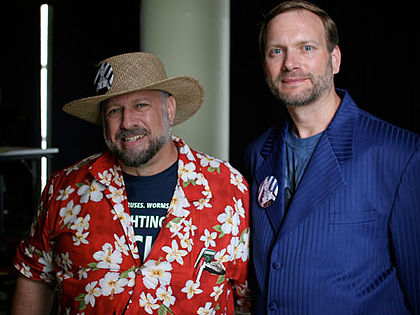
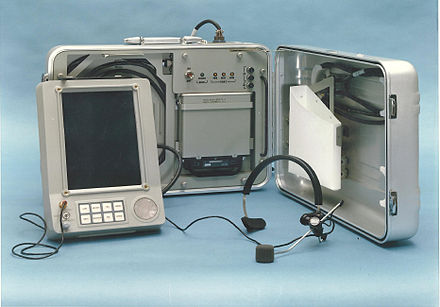




Αυτό το σχόλιο αφαιρέθηκε από έναν διαχειριστή ιστολογίου.
ΑπάντησηΔιαγραφή